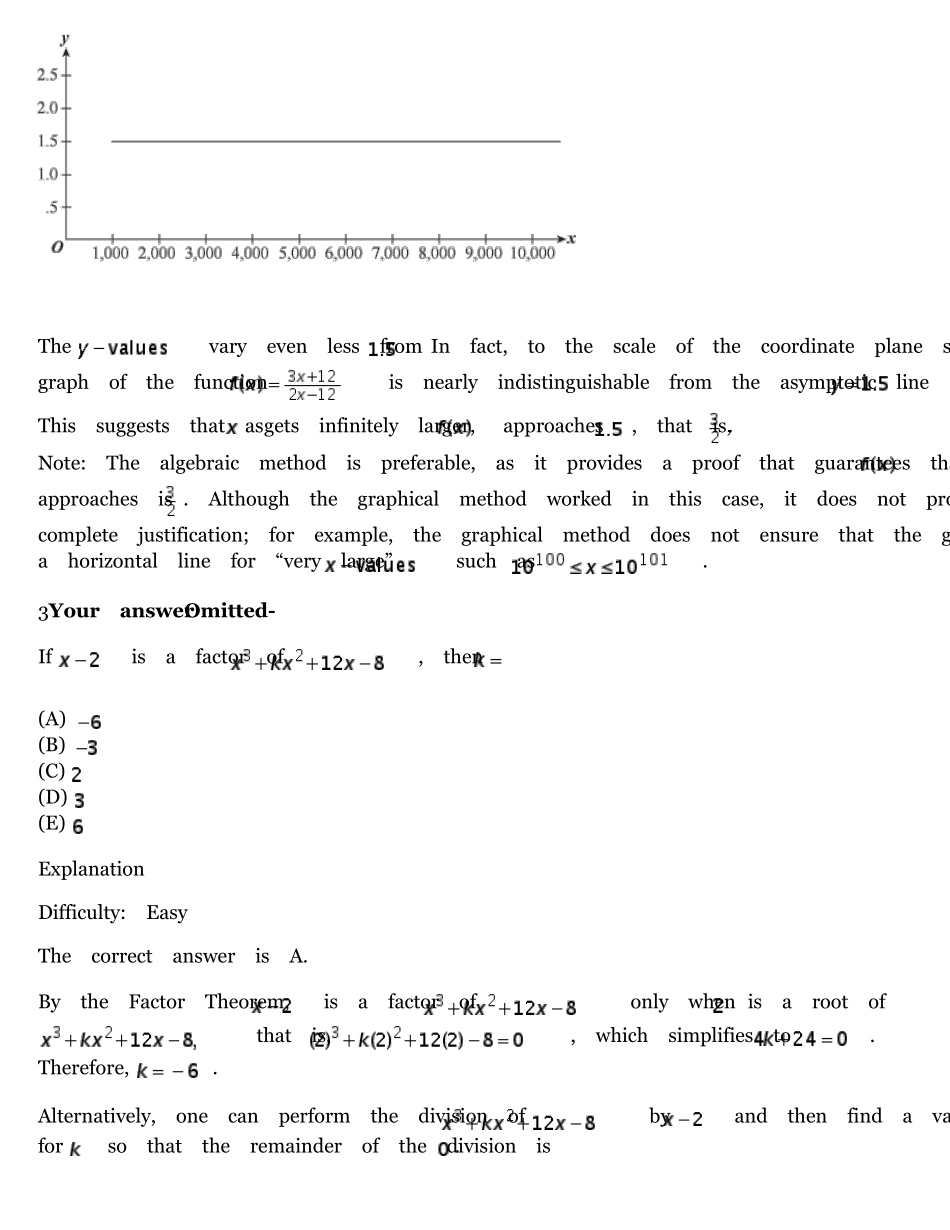SAT Subject Test Practice - Results SummaryMathematics Level 21Your answer Omitted!What is the distance in space between the points with coordinates and ?(A) (B) (C) (D) (E) ExplanationDifficulty: EasyThe correct answer is D.The distance between the points with coordinates and is given by thedistance formula: .Therefore, the distance between the points with coordinates and is: , which simplifies to .2Your answer Omitted!If , what value does approach as gets infinitely larger?(A) (B) (C) (D) (E) ExplanationDifficulty: EasyThe correct answer is E.One way to determine the value that approaches as gets infinitely larger is to rewrite thedefinition of the function to use only negative powers of and then reason about the behavior ofnegative powers of as gets infinitely larger. Since the question is only concerned with whathappens to as gets infinitely larger, one can assume that is positive. For , theexpression is equivalent to the expression . As gets infinitelylarger, the expression approaches the value , so as gets infinitely larger, the expression approaches the value . Thus, as gets infinitely larger, approaches .Alternatively, one can use a graphing calculator to estimate the height of the horizontal asymptotefor the function . Graph the function on an interval with “large” , say, from to .By examining the graph, the all seem very close to . Graph the function again,from, say, to .The vary even less from . In fact, to the scale of the coordinate plane shown, thegraph of the function is nearly indistinguishable from the asymptotic line .This suggests that as gets infinitely larger, approaches , that is, . Note: The algebraic method is preferable, as it provides a proof that guarantees that the ...


